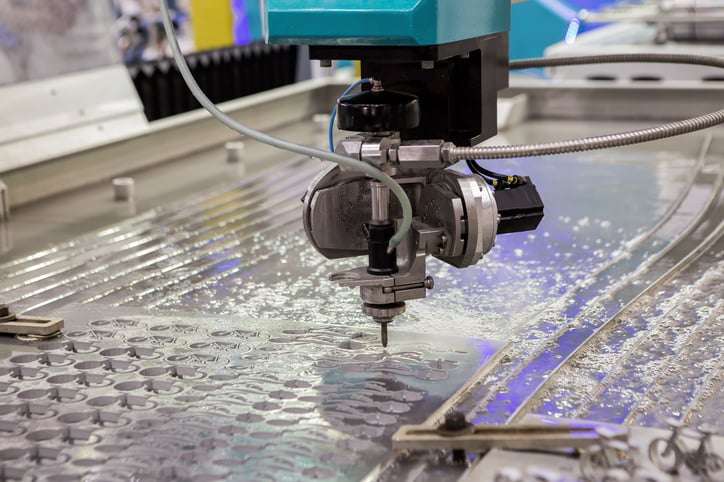
Water plays a critical role in the production of many of the things we use in our everyday lives—such as T-shirts, mobile devices, paper, oil, metals, medications, and more. You might be surprised to learn that 659 gallons of water are used to produce a single T-shirt and that 3,190 gallons are needed to produce a single smartphone. Water is also extremely important in the production of the foods we eat and the beverages we drink; if water is contaminated, consumers might get sick. Beyond that, manufacturing organizations need to use water to keep their facilities clean, and they also have to figure out what to do to dispose of wastewater, which is one of the biggest byproducts of manufacturing.
With all this in mind, it shouldn’t come as a surprise that manufacturers are some of the biggest consumers of water. And according to industry pundits, that use will only increase in the future. PricewaterhouseCoopers, for example, indicates that water demand from manufacturers in the retail and consumer sector will increase by 400 percent by 2050. Part of the reason behind that growth in demand is because water has many different applications in manufacturing. It’s used to cool things down (e.g., heavy machinery), to facilitate various processes (e.g., cleaning products and serving as a lubricant), and to generate steam in order to bring heat to certain manufacturing processes, among other things.
Since water is so important to many manufacturers, maintaining proper water quality is a top priority when it comes to ensuring high-quality products are produced. For example, soaps that have high pH levels can cause skin to become irritated and dehydrated. Similarly, when clothing has a pH level outside the optimal range, skin can start to itch.
In order to ensure products are in optimal condition and to move sustainable development efforts forward, manufacturing companies across all sectors need to take a proactive approach to water quality management. With that in mind, let’s take a brief look at the role water quality plays in three different verticals and why it is essential that water quality is monitored in their manufacturing processes.
1. Water quality in food and beverage manufacturing
In the food and beverage industry, maintaining strict water quality standards is a must, as the industry is regulated by the Food and Drug Administration (FDA). For example, tea drinks tend to range from 6-7.5 pH, while sodas typically range from 2-4 pH. Deviations from these ranges will likely result in products that don’t taste as expected and dissatisfied or, worse yet, sick customers. Similarly, pH plays an important role in the production of cheese. When cheeses have low pH levels, they’ll crumble; cheeses with high pH levels will stretch. If cheese manufacturers want to produce the best products possible, they’ll have to monitor pH levels throughout the production process.
In addition to water playing a critical role in the quality of the food and drinks themselves, manufacturers in this space have to pay close attention to the wastewater they generate, which is often processed on site. These systems need to be frequently tested in order to ensure wastewater is processed according to standards.
2. Water quality in clothing manufacturing
The fashion industry uses a ton of water. Cotton, in particular, accounts for 90 percent of the natural fibers used to make clothes and, as such, requires the most water in the apparel supply chain. Like the food and beverage industry, clothing manufacturers also produce a lot of wastewater. In fact, behind agriculture, textile dyeing is the second-biggest polluter of clean water on a global scale. To support sustainable development, reduce pollution, and make sure that the clothes they create don’t irritate the skin, textile manufacturers need to monitor water quality closely.
3. Water quality in technology manufacturing
Remember how much water was used to make your smartphone? That’s not just any kind of water. It’s called ultra-pure water (UPW), and it plays a central role in the production of semiconductors—and, therefore, most common electronic devices. Semiconductors need to be immaculately clean in order to function properly, and UPW is the solvent that makes that possible.
Maintaining this level of purity requires proactive water quality monitoring. Generally speaking, UPW is water that is free of all dissolved, suspended, organic, and inorganic impurities. For this reason, semiconductor manufacturers use devices such as TDS testers to make sure that water isn’t “too hard” for production.
The easiest way for manufacturers to monitor water quality
Monitoring water quality doesn’t have to be as hard as it might sound. Leading solutions leverage the latest technologies to streamline the water quality monitoring process considerably—right out of the box. Depending on how unique your company’s processes are, however, you might need a custom tool designed to support your specific use case. Do your due diligence and research your options, and you’ll find the solutions you need to solve your facility’s water quality challenges, increase your productivity, and delight your customers.
![[FREE GUIDE FOR DISTRIBUTORS] A Complete Guide to the Jenco Product Line: How to Sell, Market, and Be Successful](https://no-cache.hubspot.com/cta/default/2136035/80bf53b8-43b9-4ad3-9946-bce0a8e4beb4.png)

Comments